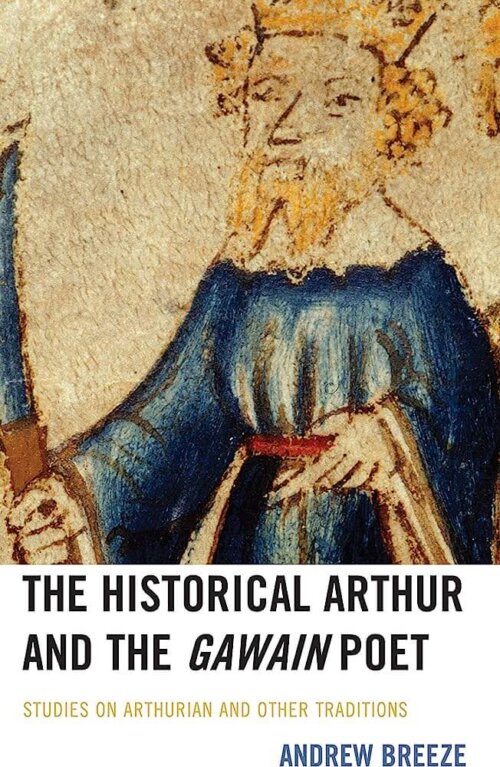The Return of the King: Arthurian Legends and History

“It is all true, or it ought to be; and more and better besides.”
Much of the recent revival in humanist education (both K-12 as well as post-secondary) has been built upon the framework of the “classical curriculum.” This curriculum, while ultimately providing a panoply of the great books of the Western tradition, is firmly rooted in the “classical” world of Greece and Rome. From homeschool co-ops to graduate-level courses at humanist universities, the works of Greek philosophers such as Plato and Aristotle and Roman poets such as Virgil and Ovid are studied, taught, and cherished. Certainly, medieval works are not neglected in these educational communities; however, even in the Middle Ages, there is a preference for Mediterranean thinkers such as Dante and St. Thomas Aquinas as continuations of the Greek and Roman traditions. Celtic, Scandinavian, and Germanic stories—even Christian or Christianized ones (with the occasional exception of Beowulf and maybe The Song of Roland)—are often avoided. This is a shame, for there is a whole host of mythological traditions that are a fountain of wisdom, which is what humanist education seeks to promote.
One of the most well-known—if often neglected mythological traditions—is the collection of King Arthur stories. Although the stories themselves are often set in the world of the high or late Middle Ages, it is generally assumed tat the historical Arthur was a Romanized Celtic Christian king who resisted pagan Saxon invasions of Great Britain. Over time, in popular understanding, Arthur’s narrative was imbued with various mythic elements and the ornaments and aesthetics (as well as the technology) of the High Middle Ages, making the Arthur we know today. However, in his recent work, The Historical Arthur and the Gawain Poet, Andrew Breeze of the University of Navarra attempts to topple this popular view, providing a historically accurate but nonetheless fascinating portrait of Arthur.
In The Historical Arthur, Breeze claims that the real Arthur was not a king, but a North British warlord who died at the battle of Camlan in 537. Breeze notes that by the mid-twentieth century, some scholars doubted whether Arthur truly existed or, at the very least, whether he fought the battles that were attributed to him—as Breeze describes, even Sir Winston Churchill was annoyed by the fact that scholars could not place Arthur. In contrast to twentieth century skepticism, Breeze states that Arthur was, in fact, a real, historical person. Arthur, like most historical figures, nonetheless has been appropriated and historically conditioned by those historians who wrote about the early British war leader—Breeze notes that Churchill envisioned Arthur as a British cavalryman who fought off invader Germanic pagans (not unlike Churchill himself). Arthur played an important role in Churchill’s A History of the English-Speaking Peoples. He is mentioned in chapter 56 of the Historia Brittonum (9th century) as a “leader of battles” or dux bellorum—a role that Breeze views as accurate (as opposed to Arthur as a “king”). While Arthur could not have fought in all of the battles at which the author of the Historia Brittonum places him, these battles did, in fact, occur and Arthur did fight in most (11 of 12 battles with the exception of the Battle of Mount Badon).
Moreover, as Breeze notes, with aid from the archeologist O.G.S. Crawford, we can glean from the Historia Brittonum that Arthur fought along the British-Scottish border during the 530s as some sort of war leader. Breeze also claims that Arthur’s name (Artorius) is ultimately Latin and not Celtic as some have assumed. Moreover, Churchill was not wrong to identify Arthur as a cavalryman or a skilled military tactician. Breeze does note, however, that Churchill’s vision of Arthur, drawn from the early twentieth century Oxford historian R.G. Collingwood, as a powerful “Count” who commanded armies across Great Britain, is an exaggeration. Breeze’s Arthur is similar to the Welsh penteulu, a warlord. Furthermore, Arthur did not fight against Saxons, but against other North Britons—possibly engaging in cattle-raiding.
In addition to his treatment of Arthur, in The Historical Arthur, Breeze marshals the argument that Sir John Stanley of Cheshire is the author of Sir Gawain and the Green Knight, who composed the poem in 1387 as part of the Christmas festivals at Chester Castle. The author of Sir Gawain is thus, like Arthur, a figure of Northern England and his Stanley’s authorship demonstrates the existence of a sophisticated late Medieval literary culture in Northern England. Stanley, in Breeze’s argument, rose from being the son of a minor landowner, to being a courtier to Richard II and founding a dynasty that lasts to the present-day Earls of Derby. A Medieval “Renaissance man” avant la lettre, Stanley was a Knight of the Garter and Lieutenant of Ireland, among other roles, as well as the author of some of the most important poetry in the English language.
While we are in a period of unquestioned civilizational decline, we are, perhaps fittingly and paradoxically, in a period of civilizational renewal “from the ground up.” Little “Benedict Option,” “platoons of civilization” are blossoming, not just throughout the United States, but throughout the wider West. One of the hallmarks of this dispersive micro-Renaissance is the emergence of a strong tradition of faith-based classical education. While rightly giving pride of place to the classical works of the Greeks and Romans, these schools should also not forget the tradition of Arthuriana, which, as Andrew Breeze develops, is a largely mythic tradition, nonetheless rooted in a fascinating historical reality.




